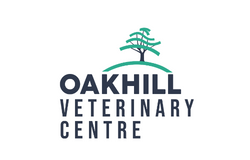Dog care
Owning a dog is great fun and immensely rewarding. But given that dogs have complex needs, our expert advice will help you ensure your dog is healthy and happy.
Taking care of your dog
Getting a puppy
Getting a puppy is an exciting time but there are certain essentials you will need to know to ensure your new puppy remains fit and healthy.
Even if your puppy has been vaccinated you should still bring him/her in to have a full vet check. As well as the vet being able to identify any health issues, it will also help your puppy get used to being in the veterinary surgery.
House training
For hygiene reasons, all dogs should be trained to urinate and defecate on command and in an appropriate place.
FIRST SOME THINGS TO AVOID
Never use physical punishment (smacking) when a dog goes to the toilet in the wrong place as this will just make the dog more secretive and difficult to house-train. Rubbing a dog’s nose in what it has done will teach the dog nothing, but it will make a horrible mess. If you find a mess that your dog has done earlier you must not punish him, even verbally.
DEALING WITH MISTAKES
Mistakes will happen, and your dog will occasionally soil in the house until he is fully house-trained.
- If you catch your dog making a mess somewhere, then say ‘no’ in a calm voice (not angrily) and quickly take him to the place you want him to go to the toilet. Then reward him for finishing off there.
- If you find a mess your dog has done earlier, just clean it up. Do not get cross with him.
-
When you clean up, try to avoid using strong-smelling cleaners like bleach or pine-scented disinfectant. These may mark the place with a strong smell that encourages the dog to use it as a latrine. Instead, use odourless cleaners after you have thoroughly cleaned the area with soapy water. After cleaning, apply a biologically-based scent-free deodoriser spray.
HOUSE-TRAINING METHOD
Dogs tend to need to go to the toilet within 20 minutes of a meal or a period of sleep. You should take your dog to the toilet area at these times and regularly every 90 minutes during the day (every 60 minutes for puppies) until you see a pattern to when your dog needs to go to the toilet.
Designate a toilet place in the garden. It should be an obvious place, preferably somewhere that you dog has
previously used. If you have to mop up urine in the house then wring the cloths out onto this toilet spot occasionally so that it is marked as a latrine.
- At the appropriate times, calmly put your dog on a lead and take him into the garden. Remain completely passive and do not interact with your dog in any way.
- Walk to the toilet spot and circle it a couple of times. Continue to stay calm and ignore your dog.
- Stand still and quietly mutter the command you want your dog to respond to.
- Wait for up to five minutes.
-
If your dog goes to the toilet wait until he has almost finished. If you are using clicker training, then give a click just as your dog is finishing going to the toilet. Give a reward, praise and attention. Let your dog off the leash to sniff around the garden. Play a game for a couple of minutes.
-
If your dog does not go to the toilet, silently lead him back inside without even taking the leash off. Try taking yourdog outside again a little later.
As you repeat this training, you should gradually raise the level of your voice to a normal level of speech when you give the command. You will find that your dog rapidly comes to understand that he should go to the toilet whenever he is let into the garden or given a command. You can test this by following the same house-training routine when you go to the park. In public places it may not be acceptable to allow your dog to run free, so you may have to use a strong extending leash to control your dog during play.
It is also important to restrict your dog’s ability to make mistakes. Keep your dog supervised at all times when you are at home and take him to the toilet before you go out. Also consider using an indoor kennel to confine your dog while you are out. If you do use an indoor kennel your dog should be acclimatised to it first. Dogs will rarely soil their own bed area so this prevents accidents while you are not around. A normal dog may take 3 – 4 weeks to become reasonably house=trained, but a dog that has grown up without any training, or that has been incorrectly trained using strong punishment may take considerably longer to learn.
Adapted from ‘Behaviour Problems in Small Animals’ by Jon Bowen and Sarah Heath
